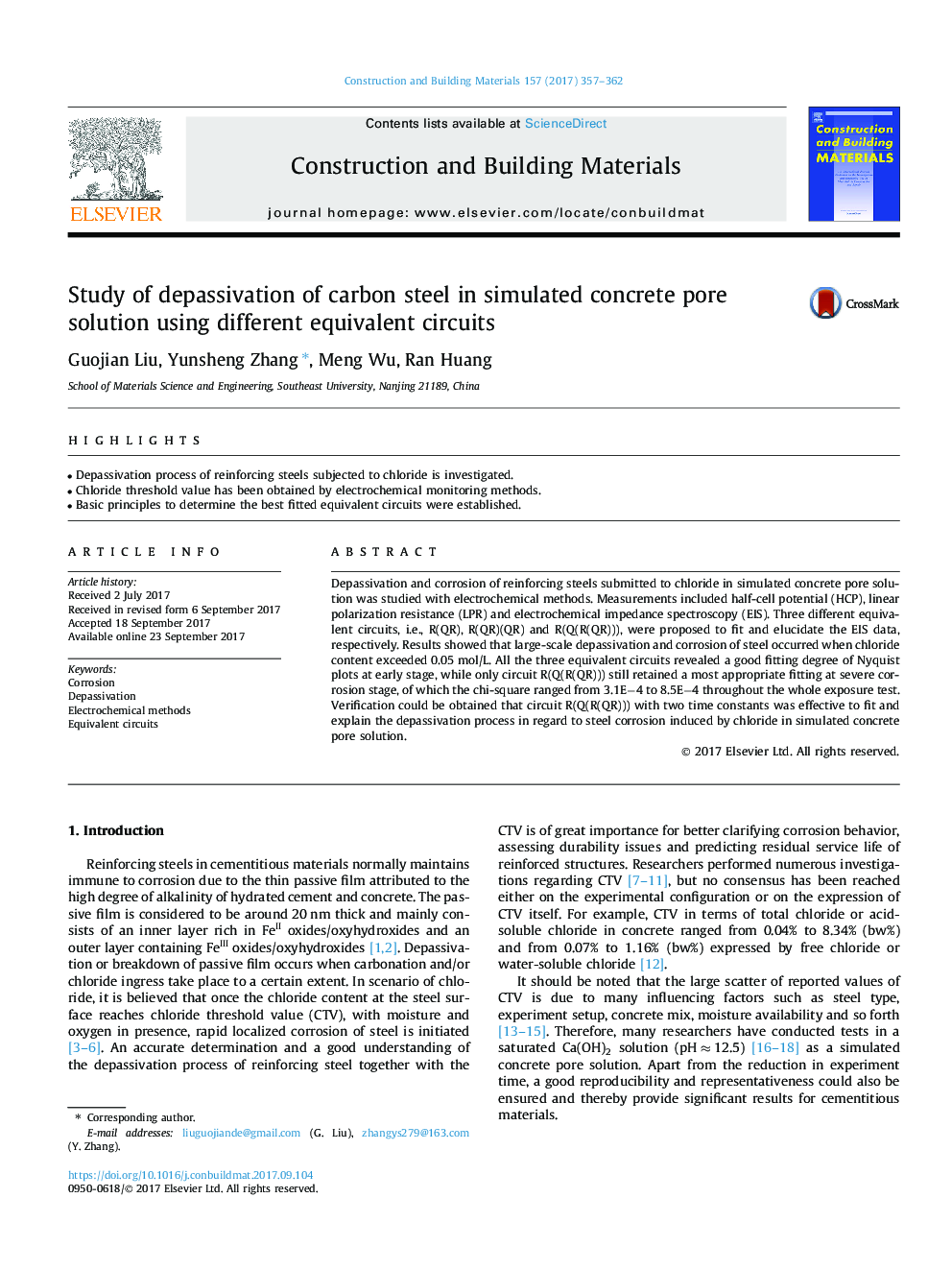| Article ID | Journal | Published Year | Pages | File Type |
|---|---|---|---|---|
| 4912880 | Construction and Building Materials | 2017 | 6 Pages |
Abstract
Depassivation and corrosion of reinforcing steels submitted to chloride in simulated concrete pore solution was studied with electrochemical methods. Measurements included half-cell potential (HCP), linear polarization resistance (LPR) and electrochemical impedance spectroscopy (EIS). Three different equivalent circuits, i.e., R(QR), R(QR)(QR) and R(Q(R(QR))), were proposed to fit and elucidate the EIS data, respectively. Results showed that large-scale depassivation and corrosion of steel occurred when chloride content exceeded 0.05Â mol/L. All the three equivalent circuits revealed a good fitting degree of Nyquist plots at early stage, while only circuit R(Q(R(QR))) still retained a most appropriate fitting at severe corrosion stage, of which the chi-square ranged from 3.1Eâ4 to 8.5Eâ4 throughout the whole exposure test. Verification could be obtained that circuit R(Q(R(QR))) with two time constants was effective to fit and explain the depassivation process in regard to steel corrosion induced by chloride in simulated concrete pore solution.
Related Topics
Physical Sciences and Engineering
Engineering
Civil and Structural Engineering
Authors
Guojian Liu, Yunsheng Zhang, Meng Wu, Ran Huang,
